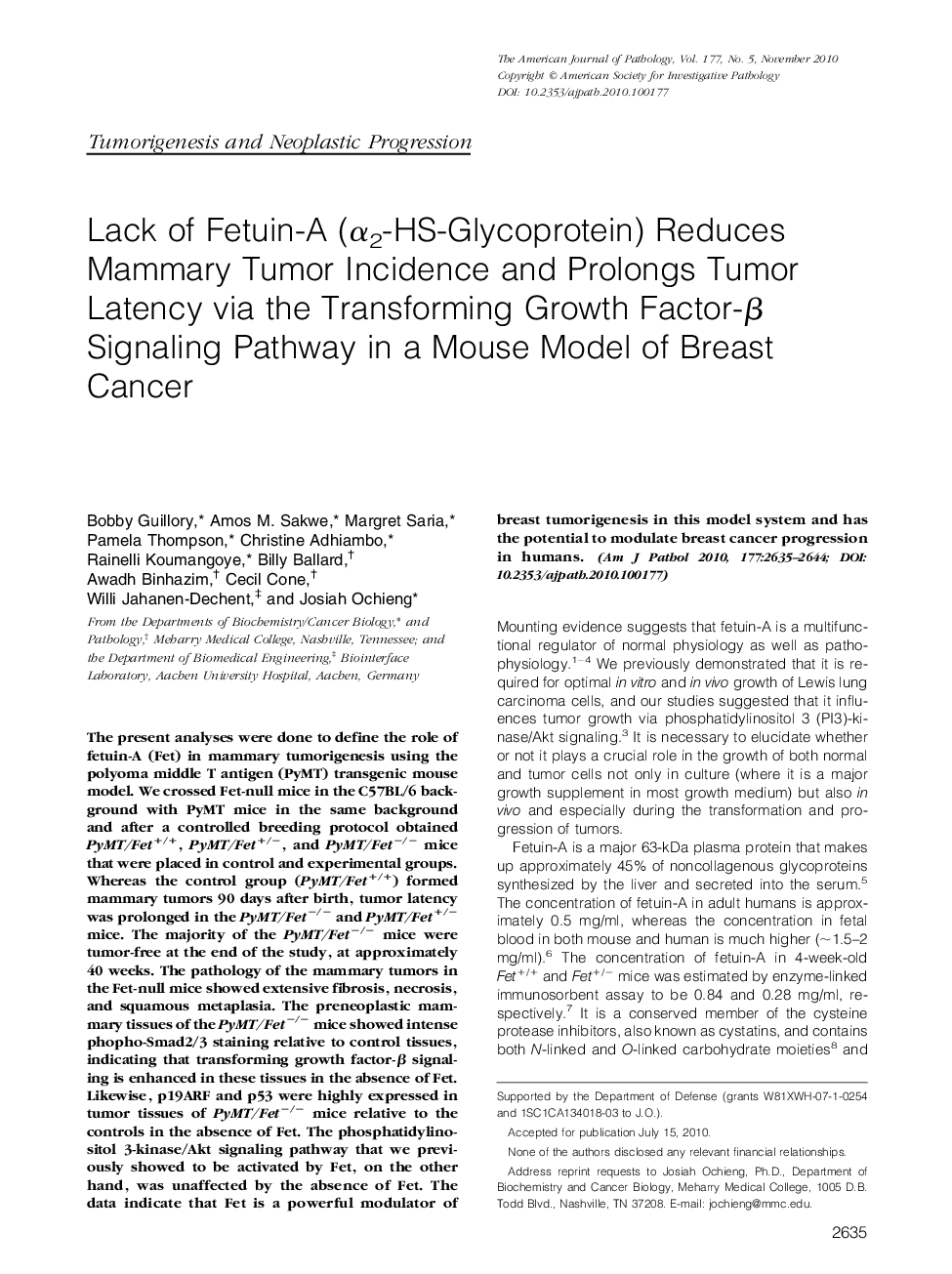| Article ID | Journal | Published Year | Pages | File Type |
|---|---|---|---|---|
| 5935552 | The American Journal of Pathology | 2010 | 10 Pages |
The present analyses were done to define the role of fetuin-A (Fet) in mammary tumorigenesis using the polyoma middle T antigen (PyMT) transgenic mouse model. We crossed Fet-null mice in the C57BL/6 background with PyMT mice in the same background and after a controlled breeding protocol obtained PyMT/Fet+/+, PyMT/Fet+/â, and PyMT/Fetâ/â mice that were placed in control and experimental groups. Whereas the control group (PyMT/Fet+/+) formed mammary tumors 90 days after birth, tumor latency was prolonged in the PyMT/Fetâ/â and PyMT/Fet+/â mice. The majority of the PyMT/Fetâ/â mice were tumor-free at the end of the study, at approximately 40 weeks. The pathology of the mammary tumors in the Fet-null mice showed extensive fibrosis, necrosis, and squamous metaplasia. The preneoplastic mammary tissues of the PyMT/Fetâ/â mice showed intense phopho-Smad2/3 staining relative to control tissues, indicating that transforming growth factor-β signaling is enhanced in these tissues in the absence of Fet. Likewise, p19ARF and p53 were highly expressed in tumor tissues of PyMT/Fetâ/â mice relative to the controls in the absence of Fet. The phosphatidylinositol 3-kinase/Akt signaling pathway that we previously showed to be activated by Fet, on the other hand, was unaffected by the absence of Fet. The data indicate that Fet is a powerful modulator of breast tumorigenesis in this model system and has the potential to modulate breast cancer progression in humans.
